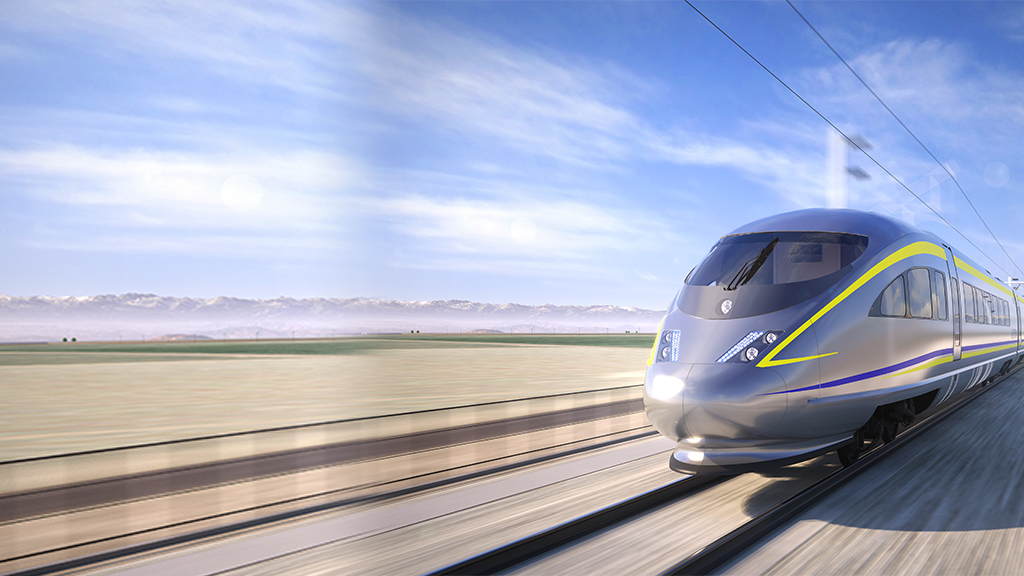Newsletter Sign Up
Stay updated on news, articles and information for the rail industry
Stay updated on news, articles and information for the rail industry
RAIL EMPLOYMENT & NOTICES
Rail News Home
Rail Industry Trends
Rail News: Rail Industry Trends
8/9/2010
Rail News: Rail Industry Trends
Freight-rail capacity expansion bill enters Senate
advertisement
Last week, Sens. Kent Conrad (D-N.D.) and John Ensign (R-Nev.) introduced the Freight Rail Infrastructure Capacity Expansion Act of 2010 (S. 3749), which aims to encourage private capital investments in freight rail and help expand rail capacity.
A companion bill to H.R. 1806 — a measure introduced last year by Rep. Kendrick Meek (D-Fla.) that currently has more than 100 House co-sponsors — S. 3749 would provide two tax incentives: a 25 percent tax credit for capacity expansion expenditures on new freight-rail infrastructure and a vehicle for expensing all qualifying rail infrastructure capital expenditures.
The incentives would apply to railroads, shippers, ports and trucking companies. Qualifying expenditures would include track, tunnels, signals, train control devices, locomotives, bridges, yards, terminals, and intermodal transfer and transload facilities.
On Friday, the Association of American Railroads (AAR) voiced support for S. 3749, which would spur future freight-rail investments that are needed to “take full advantage of freight rail’s unparalleled potential to promote economic recovery, provide much-needed jobs, take trucks off the highways, save fuel, and reduce CO2 emissions,” according to the association.
“America has great expectations for our nation’s railroads — to provide not only the vital connection for U.S. business to the global marketplace, but also the underlying network for expanded intercity passenger and high-speed rail,” said AAR President and Chief Executive Officer Ed Hamberger. “This bill offers incentives for our highly capital-intensive business, and will ensure freight rail can continue to meet these expectations.”
A companion bill to H.R. 1806 — a measure introduced last year by Rep. Kendrick Meek (D-Fla.) that currently has more than 100 House co-sponsors — S. 3749 would provide two tax incentives: a 25 percent tax credit for capacity expansion expenditures on new freight-rail infrastructure and a vehicle for expensing all qualifying rail infrastructure capital expenditures.
The incentives would apply to railroads, shippers, ports and trucking companies. Qualifying expenditures would include track, tunnels, signals, train control devices, locomotives, bridges, yards, terminals, and intermodal transfer and transload facilities.
On Friday, the Association of American Railroads (AAR) voiced support for S. 3749, which would spur future freight-rail investments that are needed to “take full advantage of freight rail’s unparalleled potential to promote economic recovery, provide much-needed jobs, take trucks off the highways, save fuel, and reduce CO2 emissions,” according to the association.
“America has great expectations for our nation’s railroads — to provide not only the vital connection for U.S. business to the global marketplace, but also the underlying network for expanded intercity passenger and high-speed rail,” said AAR President and Chief Executive Officer Ed Hamberger. “This bill offers incentives for our highly capital-intensive business, and will ensure freight rail can continue to meet these expectations.”


 2025 MOW Spending Report: Passenger-rail programs
2025 MOW Spending Report: Passenger-rail programs
 Gardner steps down as Amtrak CEO
Gardner steps down as Amtrak CEO
 Guest comment: Oliver Wyman’s David Hunt
Guest comment: Oliver Wyman’s David Hunt
 Women of Influence in Rail eBook
Women of Influence in Rail eBook
 railPrime
railPrime







